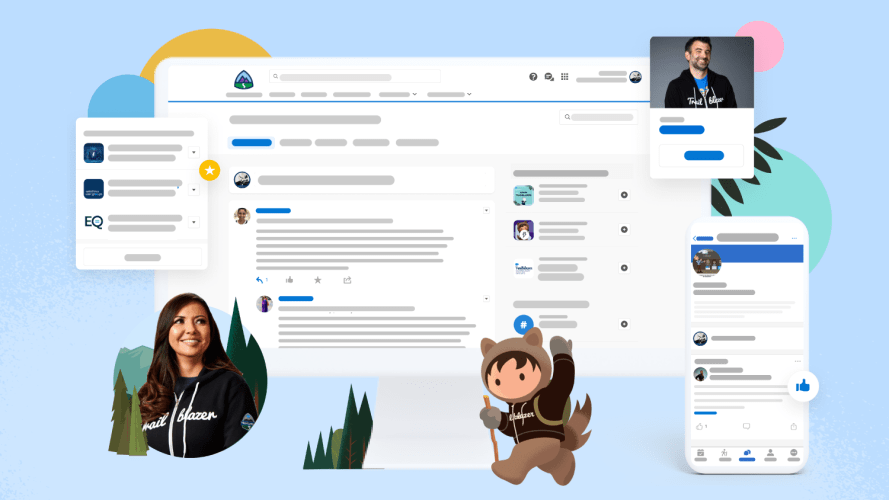Can’t Find Tech Workers? Hire Apprentices



Companies are desperate to hire tech workers. Some are starting apprenticeship programs to fill the gap and create loyal employees.

Lisa Lee
What can you do when you can’t find people to fill your open tech jobs? When the unemployment rate for tech jobs is one-third the national average, you need to think differently. MillerKnoll, a collective of design brands, did just that when it established a tech apprenticeship program in late 2021 to fill jobs that sat empty for months on end.
“It’s not uncommon for roles to go unfilled for six to nine months, which is why we put the apprenticeship program together,” said Frank DeMaria, Vice President of Digital Engineering and Platforms at MillerKnoll. He said broader roles like systems engineering and web development are a little easier to fill, but anything specific or niche, like ecommerce, can be a major challenge.
Apprenticeships, a monthslong period of immersive, on-the-job “earn while you learn,” have historically been the domain of trades like manufacturing, construction, or plumbing, and have existed for centuries. But the digital skills shortage has given rise to apprentice programs in other professional settings.
“We graduate between 75,000 and 80,000 computer science practitioners each year but we create five times as many tech jobs,” said Jennifer Carlson, co-founder of Apprenti, which helps organizations address the digital skills shortage with apprenticeships. “Higher education will never scale enough to meet the demand.”
If you’re struggling to hire tech talent (and who isn’t?) read on to hear from a company that started an apprentice program, and from an apprentice who landed a dream job.
What is Trailhead?
Employers are desperate to hire people with tech skills. Where can you get them if you don’t have a tech background? Trailhead is the fun way to learn in-demand skills, earn credentials, and connect to opportunities. n



Apprentices to the rescue
Is hiring tech talent really as hard as we read about?
“It’s harder,” said DeMaria, whose company MillerKnoll is close to graduating its first cohort of apprentices into its ranks.
The company hired recent college graduates in Bangalore, who studied tech but had no working experience. They were divided across technologies and enrolled in a “campus to corporate” training program. Apprentices were then weaved into engineering teams, sat in on scrum calls and planning meetings. Next they were issued sandboxes (a testing environment where users can safely “play” with code) to experiment with technologies used at MillerKnoll.
Finally they were issued small assignments, working with senior developers on non mission-critical projects, to get the required experience.
Why not just bring on interns?
“MillerKnoll also has an annual internship program but they are only with us for a short time. We need to get full-time workers in immediately and for the long term,” said DeMaria, who added that the company has relaxed its requirement for advanced degrees in some areas.
“There needs to be better visibility into modern and niche technologies in schools today, and education is behind. Technology moves so fast, especially in retail. Schools can’t keep up with that. They can’t change the curriculum that fast.”
So if schools can’t provide the specific skills employers require, where do they get them? DeMaria said his apprentices used Trailhead, Salesforce’s free online learning platform.
“We use it heavily,” DeMaria said “It’s one of the best in that it helps build knowledge of Salesforce. The continued investment in it is amazing, but even that is not enough to satisfy demand for these jobs.”
The first cohort of apprentices is almost ready to become regular full-time employees. DeMaria shared some tips for other companies thinking of starting apprenticeship programs:
- If you’re looking to recruit college grads into a program, time it to the graduation cycle so everyone is at the same stage of learning. If there is a large gap between the first and last recruits, it will take longer to onboard and ramp up a team.
- Line up solid training resources. Most organizations will need an external provider for initial training, which typically covers basic business skills and general tech aptitude. If you are doing the training internally, do your homework and invest wisely.
Companies embrace tech apprenticeships
While apprenticeship programs are on the upswing – Appenti, founded in 2015, now has tens of thousands of applicants and 118 hiring partners including Wayfair, Microsoft, JPMorgan Chase, and Kroger – we are not at the tipping point.
“We have finally gotten companies to the point of pain, where they’re willing to acknowledge that we have a problem, it isn’t going away and we have to invest in solving it,” said Carlson. “There’s also a different focus on how they define talent to get past the degree requirement. It’s about competency over pedigree, and apprenticeships have given them a mechanism they can use for building that system.”
Part of the culture shift that needs to happen, she said, is expanding notions of who can be successful. Unlike interns, apprentices are older and probably have applicable, valuable life experience. They may or may not have a degree. Before admitting someone into the program, she does not consider or even ask about degrees, but what skills they bring.
“Someone may have supply chain, management, payroll, scheduling and hiring experience, which are great skills,” Carlson said. “I don’t ask how they got those skills. Does it matter that they got them as the manager of a Burger King?”
One tech apprentice’s story
Shane Gable couldn’t have imagined when he dropped out of school in ninth grade that he’d eventually become a software developer at Amazon Web Services (AWS). Even after he got an accelerated accounting degree from a self-paced, online university, he said he was still living paycheck to paycheck.
“It wasn’t super helpful having an online degree,” he said. “I couldn’t get hired.”
A few years later, when his wife joined the military, Shane became eligible for free Salesforce training through Salesforce Military, which gives active military members, veterans, and their spouses classes and certifications on Salesforce technology. He eventually got four certifications, which started opening doors.
“I got an interview with AWS as a Salesforce Admin because of the certifications and Trailhead,” he said. “I didn’t get the job, but it was close.”
Tenacious, he kept in touch with AWS recruiters who steered him toward an apprentice program through Apprenti. After a required aptitude assessment and 20 weeks of classroom training, he scored an apprenticeship as a software developer at AWS.
For nine months, he learned on the job, gaining essential skills in distributed systems and web services, keeping in close contact with a mentor, a senior engineer. He progressed fast enough to graduate out of the apprenticeship three months earlier than planned, to a regular role.
“I was the only person on my team without a bachelor’s or master’s degree in computer science,” he said. “I don’t have the same education, knowledge and background, but I worked really hard to catch up.”
He is acquiring new skills on the consumer side of the cloud, is hoping to advance to the next level of software developer, and will be a mentor to incoming interns.
“I was really unhappy with how my life was turning out but now I have everything I wanted,” he said. “It’s the most amazing thing.”
Carlson, from Apprenti, said companies need to get over their cultural biases if they want to have enough tech workers.
“Companies already don’t like being the first employer of a new graduate,” Carlson said. “That’s why they require one to three years experience for entry-level jobs. If internships were enough to solve the problem, we wouldn’t be having this conversation.”
Get a 360° view of customer success
Vantage Point magazine brings together thoughtfully curated voices from the world’s most influential companies. Each issue unpacks intimate insights — from inspiring resilient teams to the promises and pitfalls of data to the impact of transformation shaping the workplace.n


























